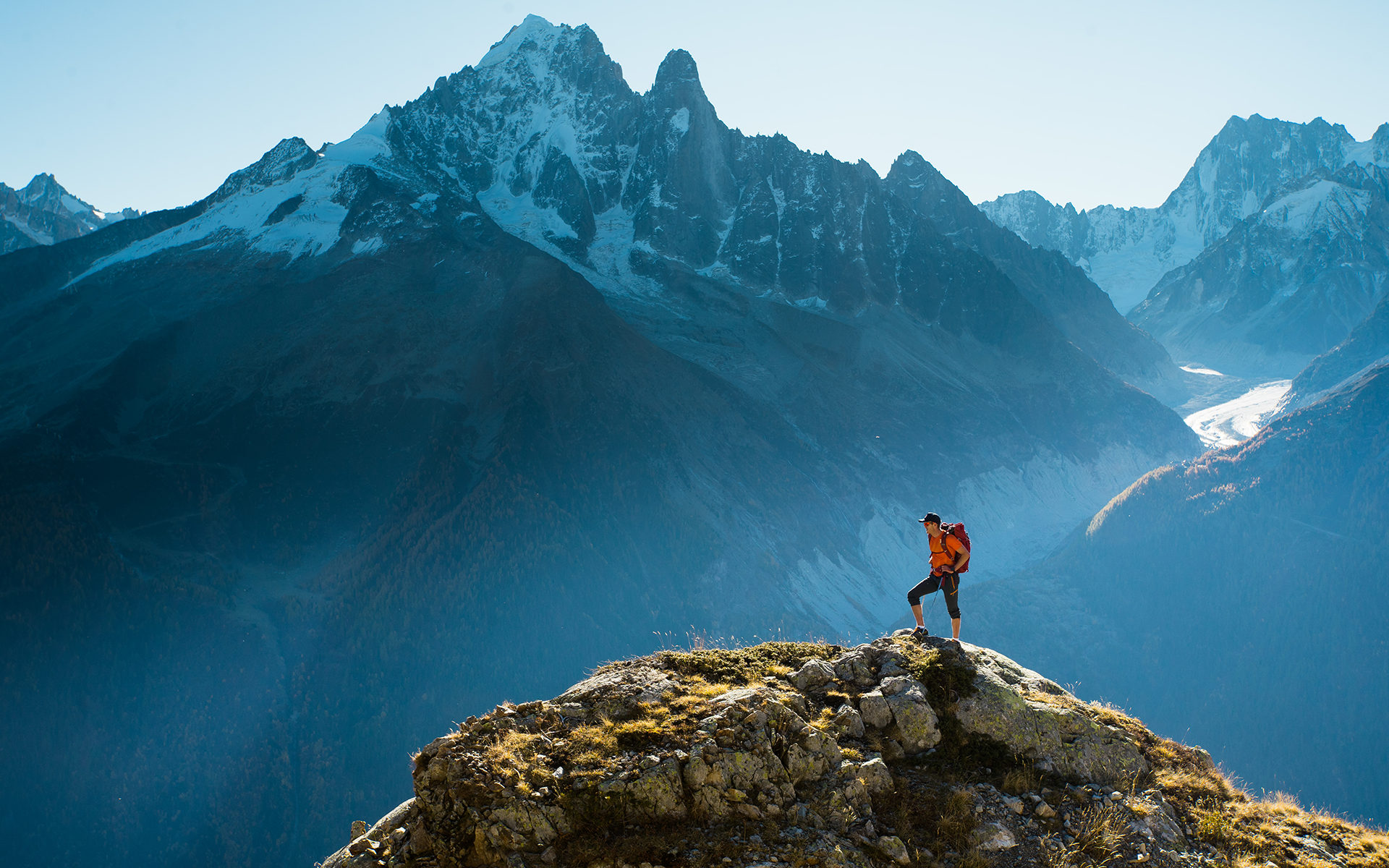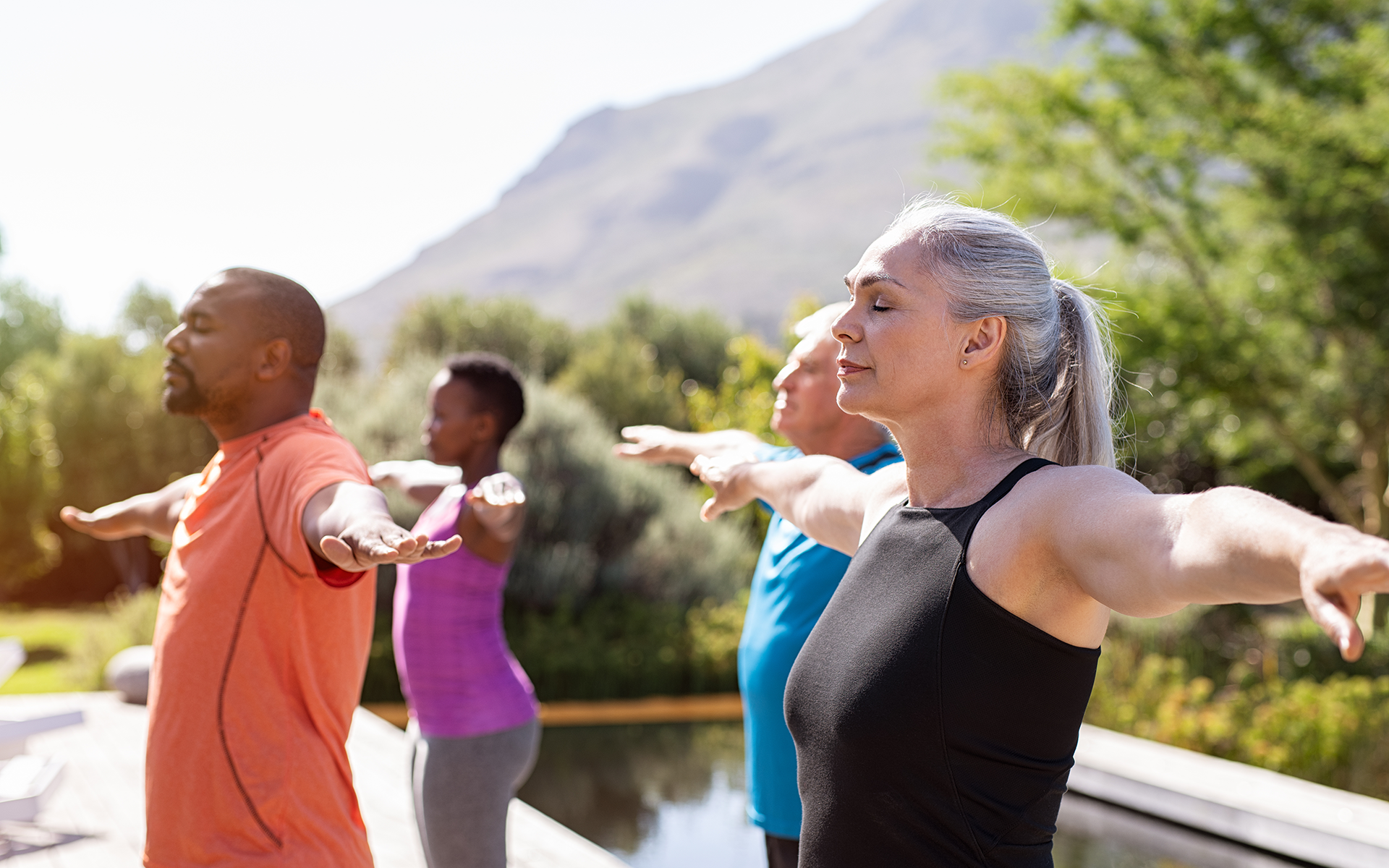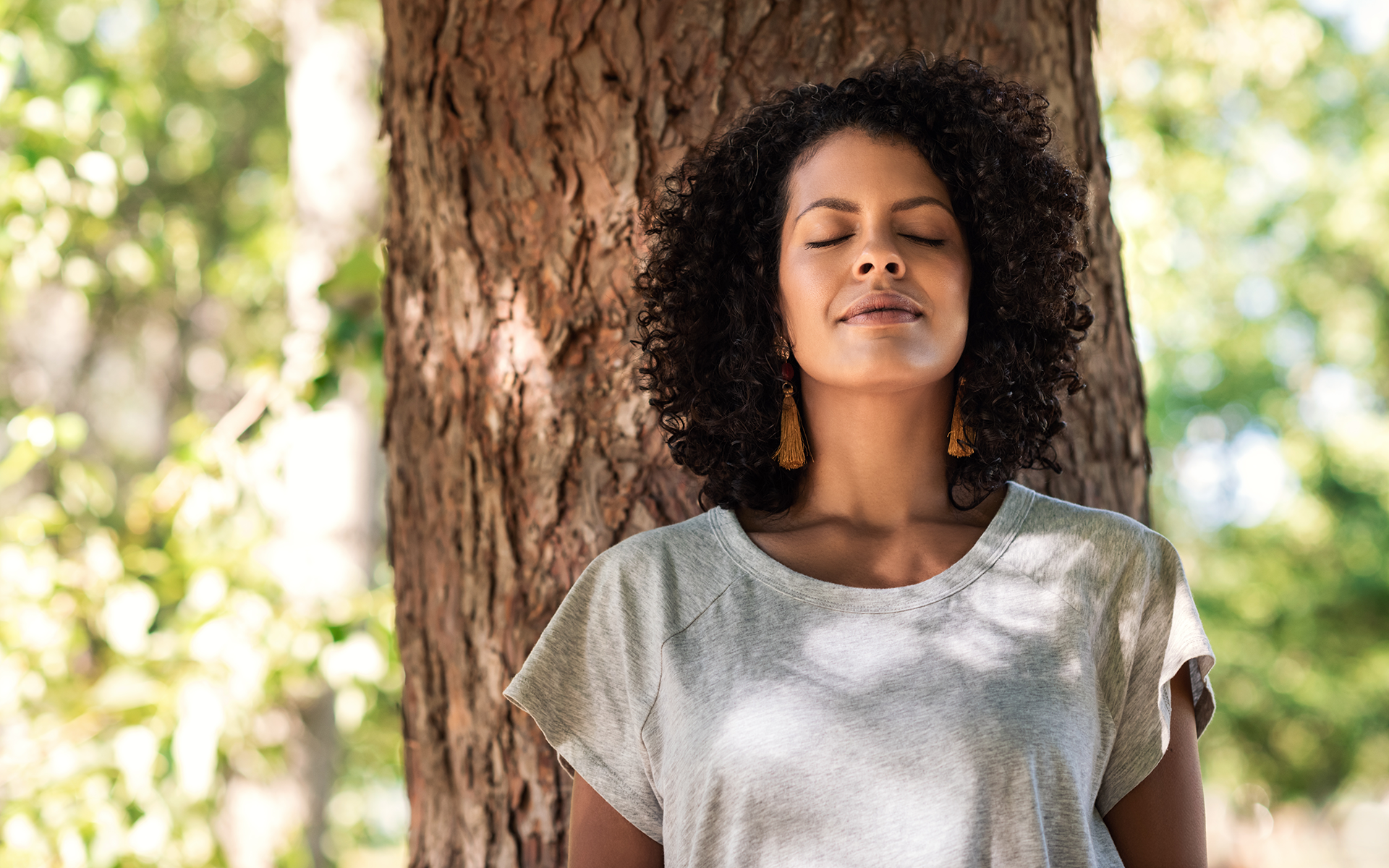I’ve been getting acquainted with the breath for a long time. I encountered it in a new way as a budding mountain athlete 13 years ago, noticing as I took my first steps on a mountain how the air grew thin and scarce the higher the altitude. When I deepened into my practices of mindfulness and yoga, I discovered that a simple breath could bring an immediate sense of renewal when nothing else could. And again, as I ascended peaks like Mount Everest, I experienced how my breath could ground and center me while on the boundaries between life and death. I thought that I knew my breath pretty well—and I did. But none of this could fully prepare me for last January, when I found myself in an emergency room, gasping for any breath at all.
After my oxygen levels dropped to a life-threatening low, and finding myself unable to breathe on my own, I was rushed to a hospital in Portugal, where I was living at the time. I spent 24 hours in the ER as doctors tried to determine what was wrong with me and to stabilize me and my breathing. The first guess was that I had COVID-19 and so, I later found out, I had been placed in a COVID ward. Once my test results came back negative, I was moved to a different ward to start exploring all the other potential causes. The ER discharge documents would later reveal a severe asthma diagnosis.
I wasn’t convinced with the asthma diagnosis. I was a mountain athlete, after all. It didn’t make sense.
Those first two hours in the ER were terrifying: Despite all the medication and supplemental oxygen, my vitals wouldn’t stabilize, machines were beeping alerts to nurses on duty, and for a moment the thought crossed my mind—Is this it? I was alone in a foreign country, trying to communicate in a language I spoke very little of. It was late evening, and once they shut the lights off, and left me alone in my chair, I turned to the only thing I knew might bring ease and relief—my mindfulness practice.
I closed my eyes, and started counting my short shallow breaths. Trying to breathe in for 1, 2, 3, hold, exhale for 1, 2, 3. Seeing if I could maybe now breathe for 1, 2, 3, 4, hold, and then exhale for 1, 2, 3, 4. The machine beeping lessened, the tension tingling through my body eased, and I found safety once again, as I often had before when navigating precarious situations on mountain tops, with my centered, however weak, breath. I kept my attention focused on my breath and started rolling my shoulders, raising my arms above my head, lowering them into cactus arms (a yoga asana) to expand my lungs. A nurse walked in to ask what I was doing. I guess they had a camera on the ward. I said “Meditation, it’s helping me calm down.” She looked confused and just asked me to be still and rest.
Navigating Grief and Resistance
I survived the ER, and while my vitals were back at 100%, being discharged was the start of a long healing journey that would take the next 7 months. I wasn’t convinced by the asthma diagnosis. I was a mountain athlete, after all. I had climbed Everest and spent so much time at altitude on other mountains, cycled at 9,000-plus feet regularly earlier that year. It didn’t make sense. I went to six other doctors and specialists, including a Chinese Medicine doctor. They all agreed it was severe asthma that I’d likely had in some form most of my life, and that was triggered by a pulmonary infection that winter in Portugal.
This confirmation was a blow to the heart. Would I be able to climb again to the highest points on earth like before? I couldn’t even go up the stairs to my apartment.
While I was still grieving my body’s reduced capacity, I needed to figure out with my doctors a treatment program that worked for me and that I could live with. As with so many health issues, and as others who experience asthma will know, a treatment that works well for one person won’t necessarily be exactly what someone else needs. The inhalers prescribed were causing sores in my mouth and a raspy voice. While I kept them on hand for urgent situations, I knew I could not rely on medication alone. So again I leaned on my mindfulness practice, along with Chinese Medicine, yoga, and breathwork.
A key part of the mindfulness aspect was trying my best to let go of the resistance to the diagnosis and to what I was experiencing—a journey which, if I’m honest, took about three months. As each month passed, I could do a little more: practice a full vinyasa yoga session, hike for a couple of hours, and go on a slow run. I could manage an oncoming attack with a pause and centered breathing. I gave myself space and permission to move at the pace my body was asking me to. It was humbling, to say the least.
Severe asthma is not the first chronic illness I’ve been impacted by: As a teenager, I was first diagnosed with depression, then at 21 years old I was diagnosed with severe endometriosis. I had been able to manage and overcome those illnesses in many ways with a combination of western medicine, eastern medicine, movement, and mindfulness. What I knew, thanks to these challenges, was that asthma might modify, but not stop me from doing the things that brought me joy in life. I also knew that if my movement practices were drastically altered, this would impact my endometriosis and mental health.
Rediscovering My Resilience
In many ways my recovery period was healing my lungs and asthma, but also all the emotions that arose. Mindfulness and breathwork were beneficial not only for the physical and mental aspects of my recovery, but also because both have the ability to help me expand my awareness. While I felt the pandemic had already inspired many moments of pause for me, this new challenge was asking me for a much deeper one. So much of my identity was associated with mountains and big athletic challenges, it was an opportunity to practice detachment from who I already believed I was, and to discover a different type of resilience—at sea level. It was also a calling to understand what was mine and what was coming from the external world of expectations. The seven months of recovery were an invitation to go further inward, and mindfulness held me steady as I did so.
So much of my identity was associated with mountains and big athletic challenges, it was an opportunity to practice detachment from who I already believed I was, and to discover a different type of resilience—at sea level.
In July, five months after I had been rushed to the ER, I set foot onto my first real mountain again, with dear friends in the majestic Dolomites in Italy. I felt an attack coming and tried to work through it on my own with box breathing and a pause. I ultimately had to use my inhaler and asked my friends to carry on and let me hang back to recoup and go a bit more slowly. I was so grateful to be there in this magical setting and finally in the mountains again, but equally was sad and frustrated that I couldn’t keep up as I once had.
I spent the next two months in Italy, mostly climbing and training on my own to allow me to do so mindfully and without the pressure of going at someone else’s pace. This was not just about training my lungs again to be at altitude and perform in a way they once had, but also to tame my mind and let it quiet enough to just be and start to enjoy my passion again, albeit at a different pace than I was used to. I cultivated an intention to set off on the trail each time with optimism and patience. Every day of training was a new opportunity to feel better. This beginner’s mindset was key, as it was a mindful effort to stop making comparisons to my past self and meet myself that day.
Acclimating to Self-Compassion
By mid-August it was time to put all my training and recovery practices to the test to climb Gran Paradiso 4,061 m (13,323 ft), the highest mountain that sits entirely within Italy’s borders. While a glacier climb, compared to my previous climbs, it was not overly technical and a two-day versus two-month endeavour—the perfect place to safely test my capabilities again. I started my journey with mindful breathing and simply focusing on each next step. I made it to the hut I was meant to sleep for the night in excellent time and met the wonderful women I would be climbing the actual mountain with the next day, starting at 6:00 a.m.
It was exhilarating to step foot on a pulsing glacier again. I felt its vibration through my entire being, and with heightened awareness couldn’t avoid noticing its deterioration due to environmental impacts. These are not moments to take for granted, but to be treasured. Each breath became very intentional, also not something to be taken for granted, as it came burdened now, instead of with ease as it had once before. My day of climbing Gran Paradiso became a walking, aka climbing, meditation. Just breathe in, breathe out, and take another step, on repeat for the almost seven hours it took us to ascend and descend. An hour from the summit, I used my inhaler, as a preventative measure and due to the pain I now felt throughout my chest. I felt my breath ease, and knew it had been the right decision to do so. This time reaching the top of the mountain was less about the mountain itself, but more about all the internal mountains I had had to summit the seven months prior to get there. If I had to summarize what I felt up there with one word, it would be compassion.
If I had to summarize what I felt up there with one word, it would be compassion.
With any kind of healing, self-compassion is a critical component. My months of recovery had required an extraordinary dose of it. So as I looked over beautiful Italy, I was filled with compassion and gratitude for the journey that had led me to this very moment. The accomplishment was not the summit, but in knowing healing had occurred. Breath has become one of my superpowers, and it’s a joy to help others discover that—whatever seemingly insurmountable challenges each of us may face—we all share this same gift. It’s something that we can so easily take for granted, but when it’s stripped of its usual ease, we realize its importance instantly. It not only keeps us alive, but it keeps us alive and awake—totally aware. If we miss a breath, we can also easily miss the daily miracles that occur in our life. When we can reclaim our awareness with mindful breathing, meditation, and other mindfulness practices, we open ourselves to fully experience our daily life. That is priceless to not miss the beauty of a moment, especially in the midst of a challenge or burden.
While asthma has no defined cure, it is an illness that can be managed. Mindfulness practices have proved to be a critical part of my recovery and management journey and continue to be a tool to take inward adventures of the mind, body, and soul. My practice helped me find an anchor in the storm life presented many times over these past seven months, and I have no doubt it will continue to serve as one kind of medicine as I navigate this illness, at sea level and above the clouds.
read more
A 12-Minute 4-7-8 Breathing Meditation
This easy breathing practice helps to release stagnant air in the lungs and find calm.
Read More
Is Mental Fitness Part of Your Workout Routine?
Mindful movement specialist and author Cara Bradley explains how we can cross-train for our mental health, the same way we cross-train for physical fitness.
Read More
Let Your Practice Guide You Beyond Crisis Mode
While many of us lean on mindfulness to help us through times of inner and outer chaos, we can cultivate the greatest resilience through consistency in our practice, even when it doesn’t feel urgent.
Read More









